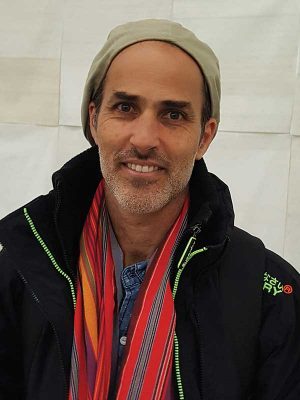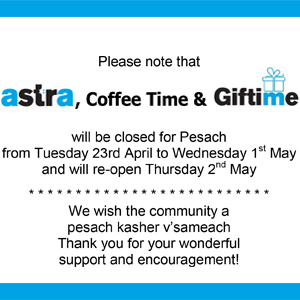As I am writing this I am getting ready for my second-born son, TanTan’s bar mitzvah this coming Shabbat.
Family and friends from all over are descending, food is being prepared, clothes bought, Torah verses discussed and chanted, and the excitement is building. As his bar mitzvah mitzvah, last Sunday he and a group of friends arranged an amazing music concert to raise money for Glendale Home. I am so proud of him. Seeing your child become a teenager is at the same time a miraculous wonder and a terrifying transition that many parents are ambivalent about. We can’t believe that that little munchkin is now a young adult and often we would love to take back the clock to those cuddly cute days of fluffy toys and nursery rhymes. It is incredible to see how much they know, how independent they are, and yet at the same time they are still ‘kids’.
And the bar/bat mitzvah ritual recognises that — it gently nudges these bnei mitzvah into the ‘adult’ community. But where does the ritual come from? How did we come to be mazal tovving generations of boys and girls as they take their turn on the bimah? Recently I was asked why all shuls call the bar mitzvah boy (or in our shul bat mitzvah girls as well) up to the Torah as maftir? Why do they do maftir (the last few verses of the parshah) and haftarah (reading from the prophets) and not the first Aliyah or any number for that matter? (Incidentally not all shuls do — I just found out that the Sephardi shul does not have their bnei mitzvah do the haftarah at all.)
The answer goes back a long way, so sit tight and enjoy this brief history of the bar/bat mitzvah ceremony. The barmy or batty of today is relatively new in Jewish custom. The roots go way back at least 2000 years to the Mishnah that says that “at age 13 one is responsible for Mitzvot” (Pirkei Avot 5:22) and the Talmud goes into great detail about the responsibilities that girls and boys have at the age of majority. However, what it does not describe at all is a ceremony. No maftir, haftarah, no sweet-throwing, no disco with speeches!
The Jewish coming-of-age ceremony of bar mitzvah was first recorded in thirteenth-century France, where it took the form of a simple statement by the father that he was no longer responsible for his thirteen-year-old son. By the 16th Century it became custom to call up a boy to the Torah after he turned 13. In communities that were extra cautious lest they should call up a lad before he was actually 13 (if his birthdate was unsure or if his 13th birthday actually fell on Shabbat) the custom became to make sure that he wasn’t called up in one of the 7 aliyot that are mandated for Shabbat, but rather in the extra reading (maftir — literally ‘the concluder’) that follows the seven. This custom has stuck until today and in most shuls the bar mitzvah boy is called up for maftir. Of course, if you are called as maftir you have the added responsibility of chanting the haftarah, and this is now standard as well.
Incidentally, if bar mitzvah celebrations are relatively new (about 400 years old) in Judaism, then bat mitzvah is even newer. While it is now normal in both Orthodox and Progressive shuls to mark a girl’s coming of age, the first known bat mitzvah celebration was as recent as 1922. We know of girls being called to say the Shehecheyanu blessing in shuls in Baghdad and Lvov in the late 1800’s but the first rabbi to have a girl lead part of the service was Rabbi Mordecai Kaplan in New York City who arranged for his daughter Judith to have a bat mitzvah in shul. It did not involve her being called to Torah, but by the end of the 20th Century most non-Orthodox shuls in the world were doing so and the Orthodox ones had some kind of ceremony, whether joint or individual. Today at Temple Israel girls wear tallit, chant maftir and haftarah and lead the service just as boys do.
As the ceremonies become more elaborate and the parties more expensive, the challenge of today is to keep the focus on the mitzvah, and not the bar! The deeper significance of the whole ritual is so much more than an excuse for a party. It is no coincidence that bar/bat mitzvah happens at just the moment that puberty and adolescence kick in and with a changing body comes a changing emotional mind with new priorities.
Rather than see this as an awkward or traumatic time, Judaism sees this as an opportunity to mark the sacred nature of the transition from child to young adult and to give the tween a challenge, something that will stretch them but not kill them, so that they can feel the satisfaction of having taken it on, mastered it and then to show that mastery in front of the whole community. This is what a good bar/bat mitzvah ritual does, and it involves not just the child but their whole family and congregation that have been there to raise them along the way. It is this that I am most looking forward to this Shabbat, to be a proud father in my shul, surrounded by friends and family, hearing my son called to the Torah.
As Andi and I prepare to stand on the bimah with TanTan this coming Shabbat, we thank the rabbis, teachers, madrichim, soccer coaches, piano teachers, friends and family who have nurtured our son along the way. May he be a true ‘son of the mitzvah’ and may you all join with us in the naches of seeing him come of age.











